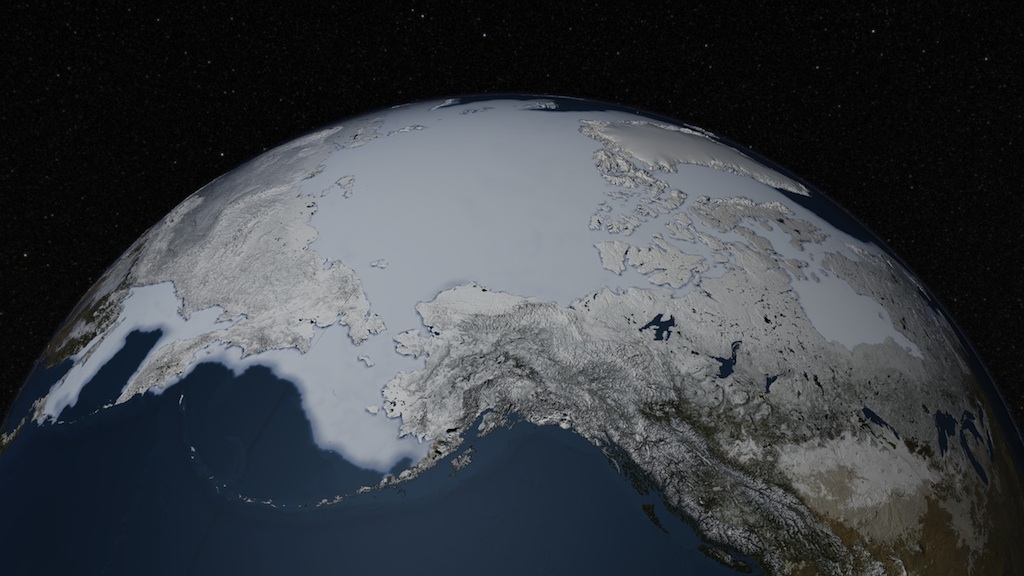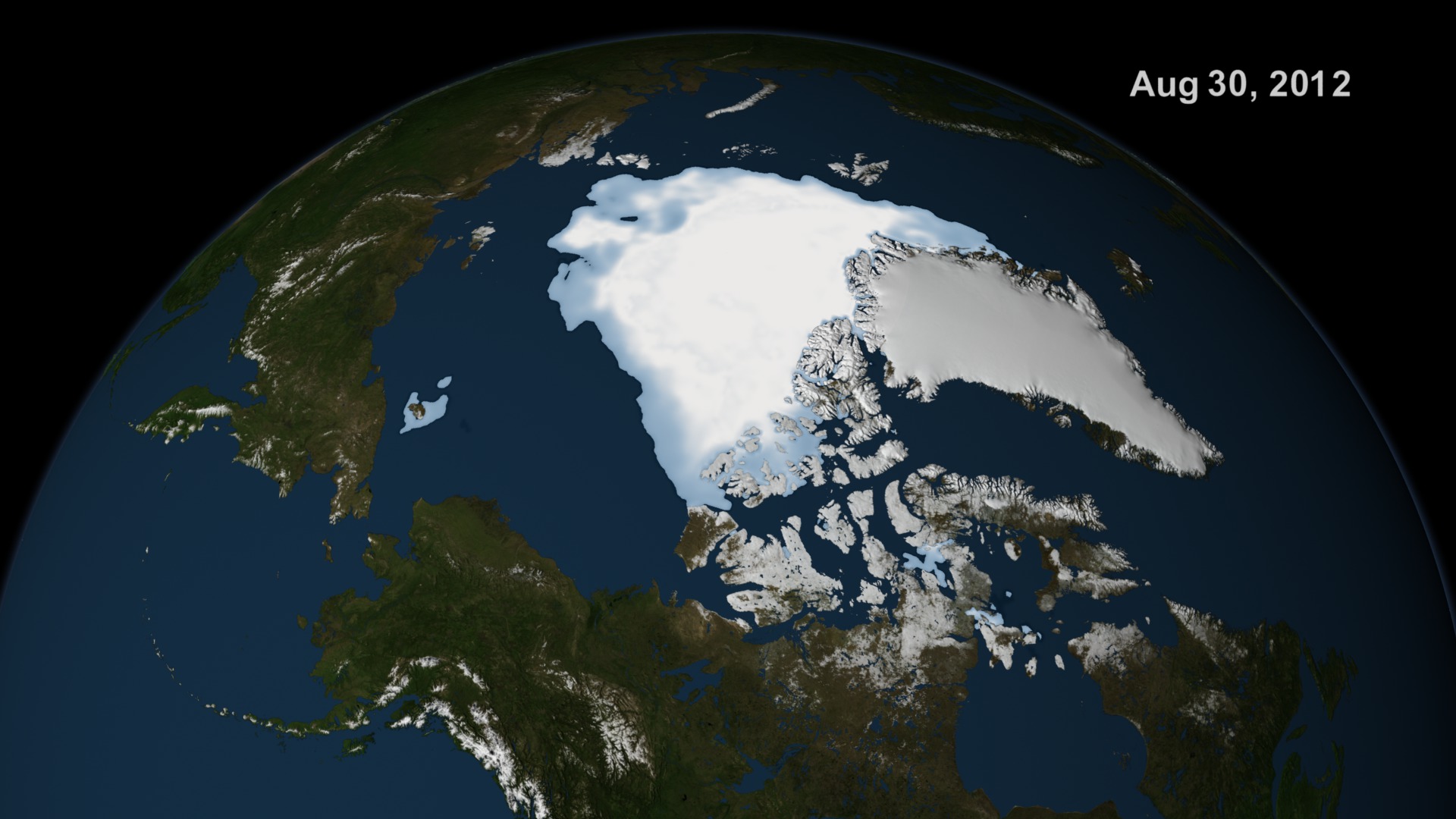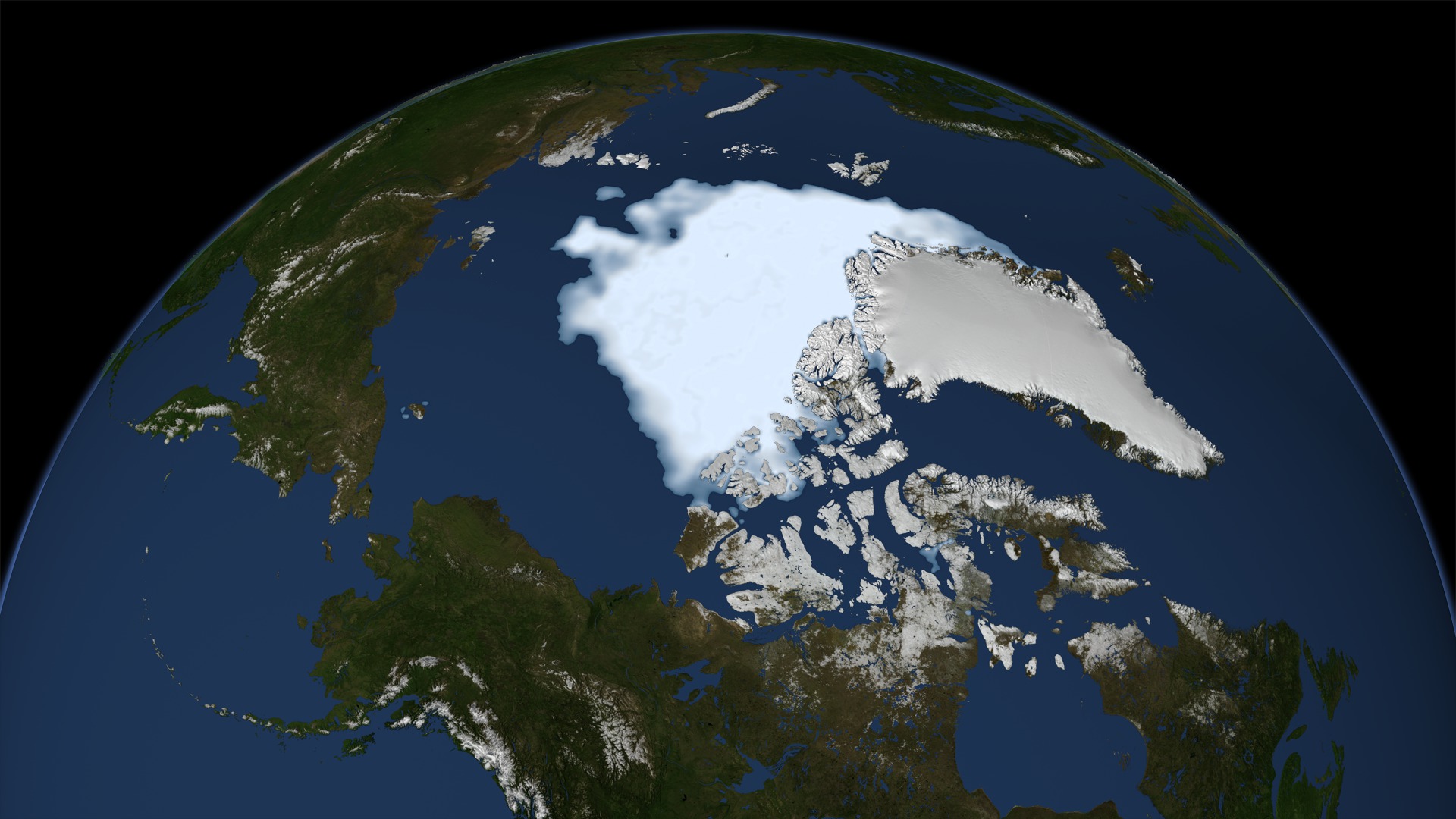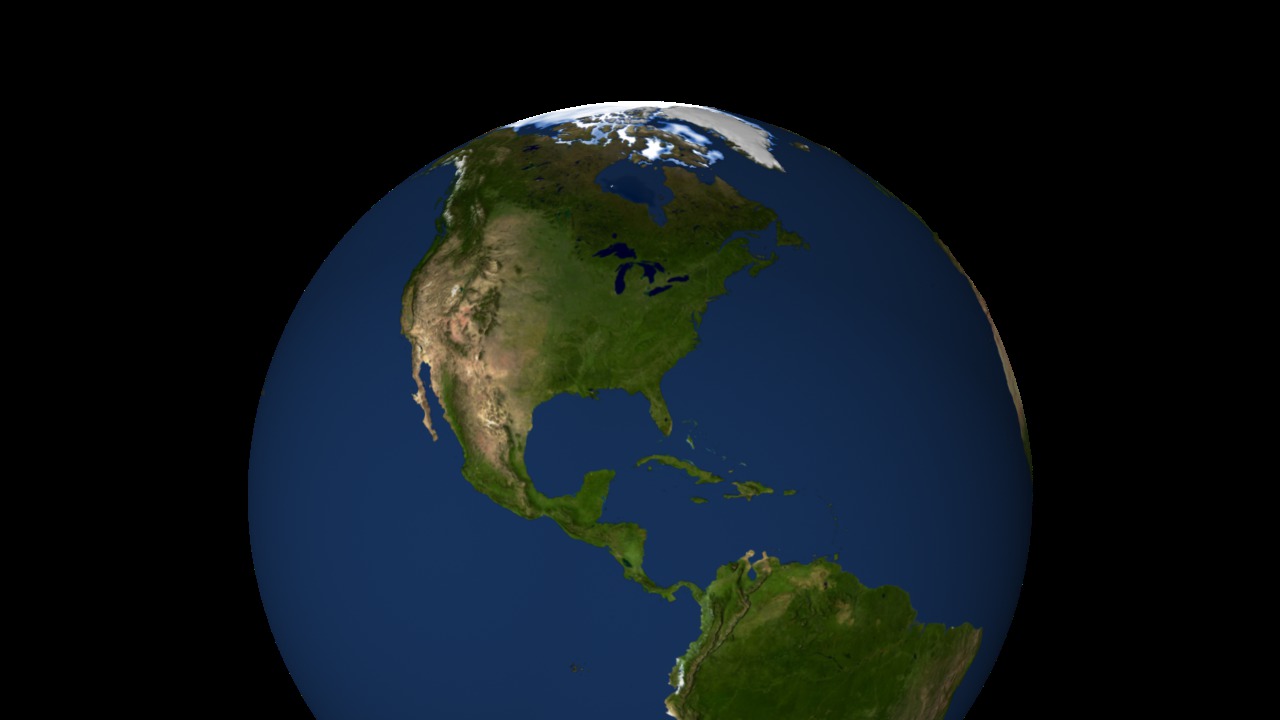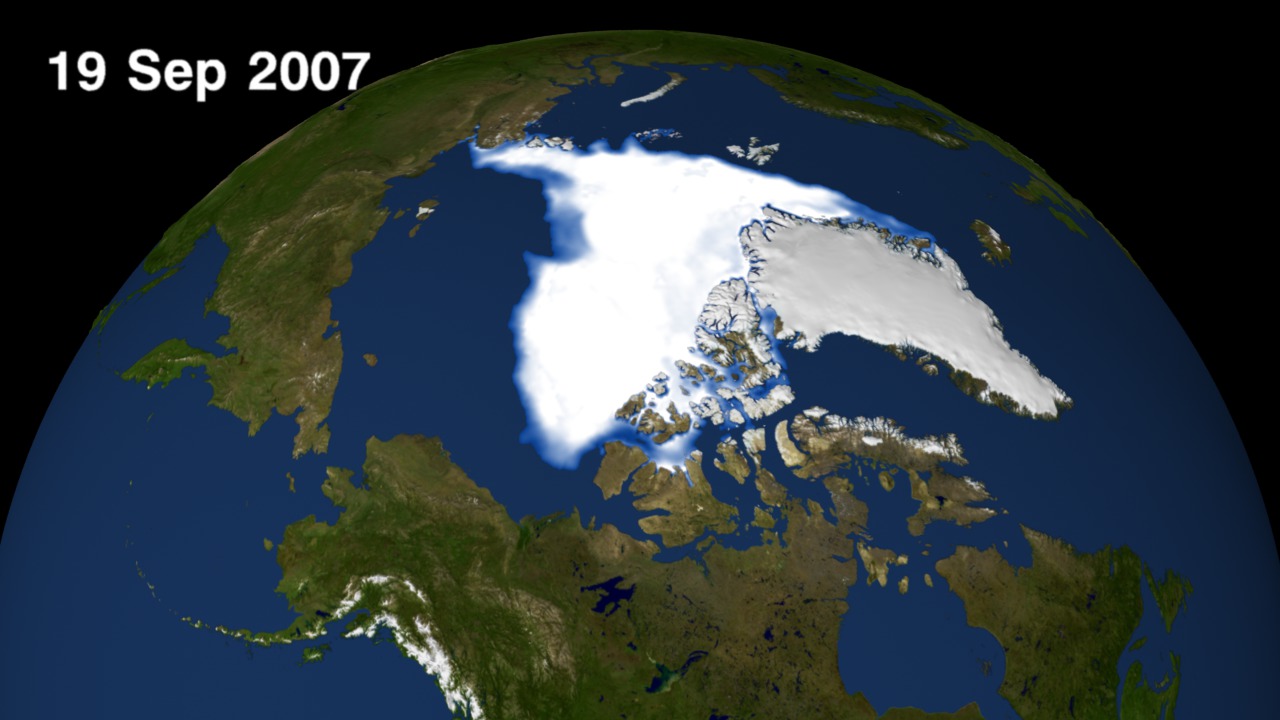Arctic Daily Sea Ice Concentration from March 2012 to February 2013
This animation shows the seasonal change in the extent of the Arctic sea ice between March 1, 2012 and February 28, 2013. The annual cycle starts with the maximum extent reached on March 15, 2012. Every summer the Arctic ice cap melts down to its minimum extent before colder weather builds the ice cover back up. This new ice generated on an annual basis is called "first-year" ice and is thinner than the older sea ice. The perennial ice is the portion of the ice cap that spans multiple years and represents its thickest component. On September 13, 2012, the sea ice minimum covered 3.439 million square kilometers, that is down by more than 3.571 million square kilometers from the high of 7.011 million square kilometers measured in 1980. The annual maximum extent for 2013 reached on February 28 reached an extent of 15.09 million square kilometers.
Animation of Arctic sea ice from March 2012 to February 2013.

An image of the Arctic sea ice when it reached the annual maximum extent of 15.099 million square kilometers on February 28, 2013.

An image of the Arctic sea ice when it reached the annual minimim of 3.439 million square kilometers on September 13, 2012.

An image of the Arctic sea ice when it reached the annual maximum extent of 15.348 million square kilometers on March 15, 2012.
Credits
Please give credit for this item to:
NASA's Goddard Space Flight Center Scientific Visualization Studio
The Blue Marble data is courtesy of Reto Stockli (NASA/GSFC).
Data Citation for Greenland DEM: Howat I.M., A. Negrete, T. Scambos, T. Haran, in prep, A high-resolution elevation model for the Greenland Ice Sheet from combined stereoscopic and photoclinometric data.
-
Visualizer
- Cindy Starr (Global Science and Technology, Inc.)
-
Producer
- Jefferson Beck (USRA)
-
Scientists
- Josefino Comiso (NASA/GSFC)
- Robert Gersten (Wyle Information Systems)
-
Project support
- Laurence Schuler (ADNET Systems, Inc.)
- Ian Jones (ADNET Systems, Inc.)
Release date
This page was originally published on Wednesday, April 3, 2013.
This page was last updated on Tuesday, November 14, 2023 at 12:04 AM EST.
Missions
This visualization is related to the following missions:Datasets used in this visualization
-
GTOPO30 Topography and Bathymetry
ID: 274 -
BMNG (Blue Marble: Next Generation) [Terra and Aqua: MODIS]
ID: 508Credit: The Blue Marble data is courtesy of Reto Stockli (NASA/GSFC).
This dataset can be found at: http://earthobservatory.nasa.gov/Newsroom/BlueMarble/
See all pages that use this dataset -
Comiso's Daily Sea Ice Concentration
ID: 539 -
Land Cover [Terra and Aqua: MODIS]
ID: 556 -
GIMP Greenland DEM (Greenland Mapping Project (GIMP) Digital Elevation Model)
ID: 746
Note: While we identify the data sets used in these visualizations, we do not store any further details, nor the data sets themselves on our site.
